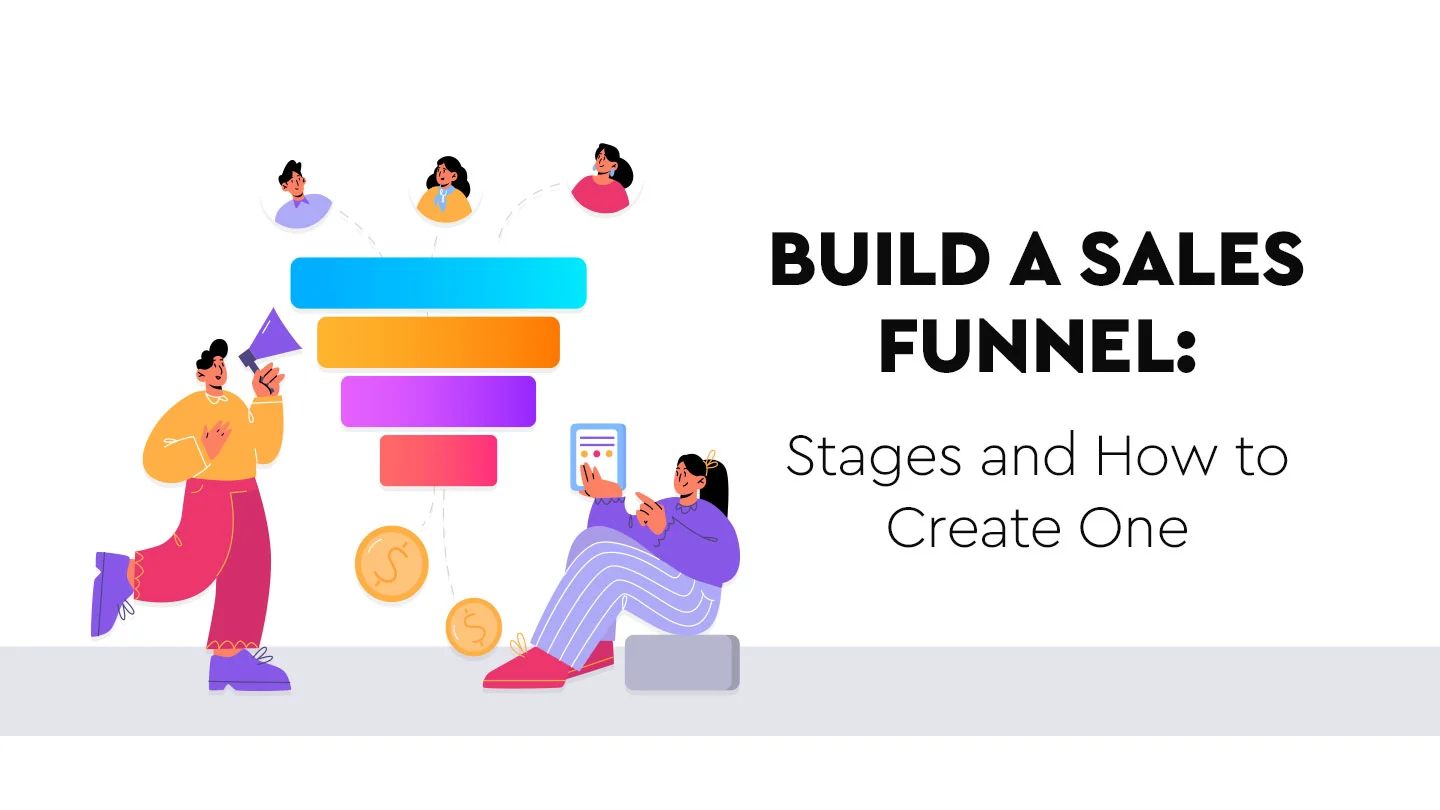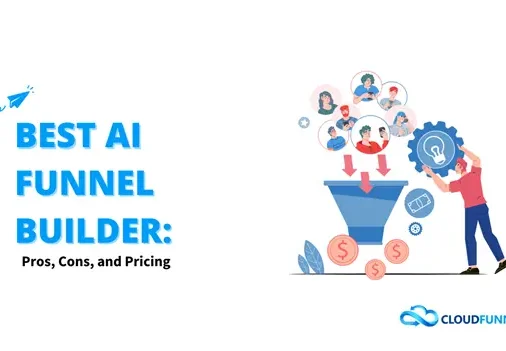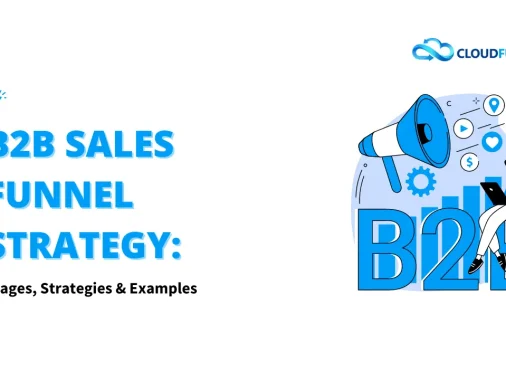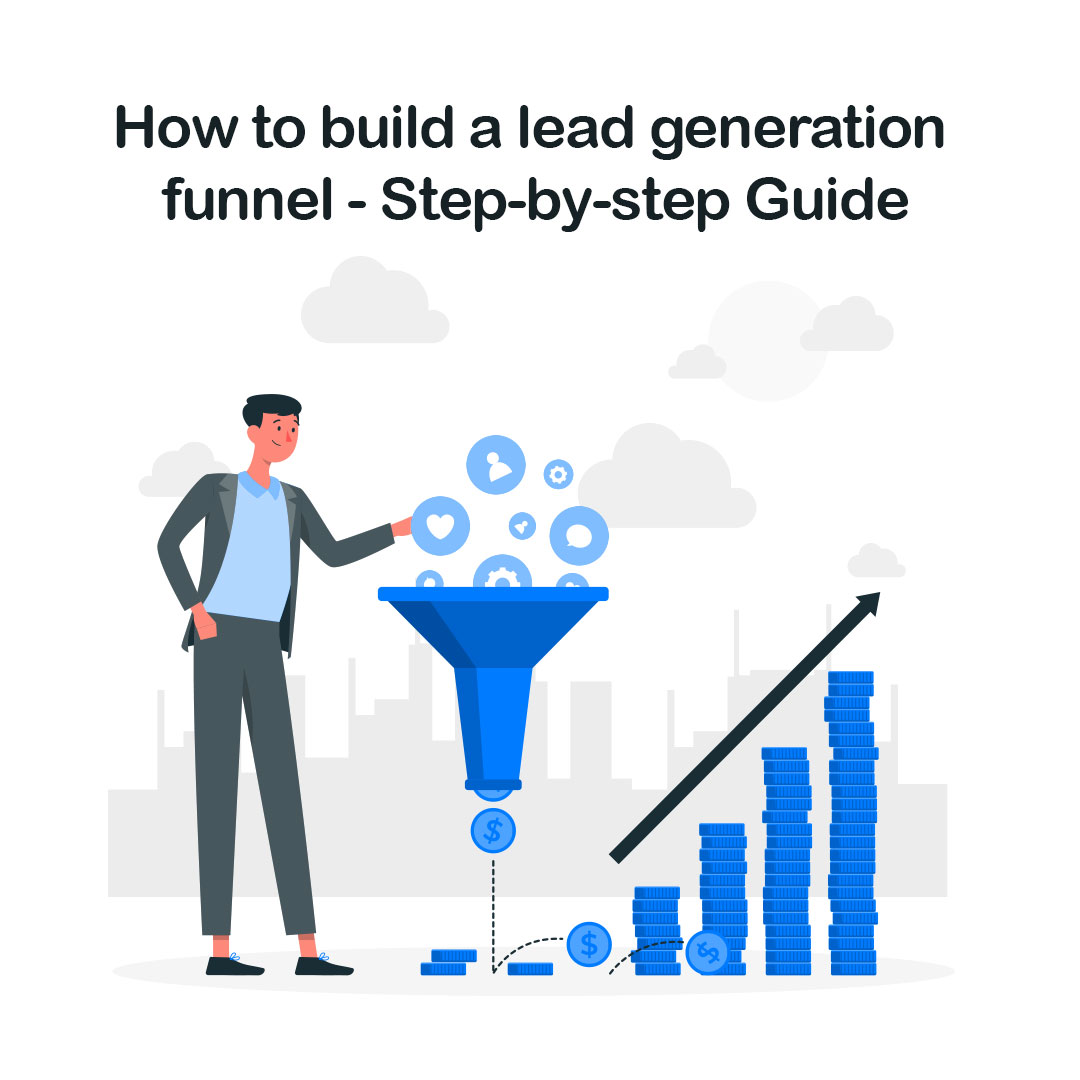Prospects may recognize your brand, but awareness does not turn them into customers. For this, skilled B2B marketers should create content for each stage of a prospect’s journey, from a quick site visit to deciding whether to work with your company.
According to the online data, 74% of B2B marketers believe that content is the best way to attract leads into the sales funnel.
The B2B lead generation funnel explains the process of finding, analyzing, and evaluating content that influences purchasing decisions. Understanding this funnel and how visitors move through it before deciding to convert is crucial for B2B lead generation.
This guide helps you with the steps to create the B2B lead generation funnel and provides tips and case studies for boosting conversion rates.
What is B2B Lead Generation?
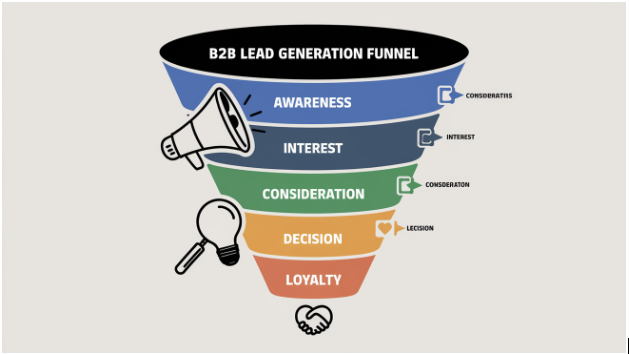
A B2B lead generation funnel is a strategic framework that outlines the customer journey from initial contact to conversion. Securing B2B leads is crucial, as success depends on reaching the right audience.
B2B funnels involve a longer sales cycle with multiple decision-makers. The typical stages include:
- Awareness: Potential customers become aware of your brand.
- Interest: Leads show interest in your offerings and seek more information.
- Consideration: Leads evaluate you against competitors.
- Decision: Leads make a purchase decision.
- Loyalty: Customers become repeat buyers.
Why is a well-constructed B2B lead generation funnel important?
Any brand looking to increase revenue and expand its customer base must build a strong lead generation funnel.
Therefore, it’s essential for unlocking your full sales potential! A good funnel is vital for boosting your sales pipeline and closing more deals. So, the main goal of any B2B lead generation funnel strategy is to find buyers and guide them through the buying process until they become paying customers.
Increased revenue and a higher conversion rate are the benefits of an efficient lead generation funnel.
Steps to Develop Effective B2B Lead Generation Funnel
1. Identify Your Buyer Persona and Target Audience
The first step is to define your target audience and buyer persona. You need to answer some questions, like, Who are you trying to sell to? What do they need and want? What main problem are they facing?
This work might seem hard, but it’s straightforward. Start by creating buyer personas, which are fictional profiles of your ideal customers. To do this, gather data about your target audience’s age, interests, and needs.
Using your data analytics tools and results from your current marketing campaign is a great way to begin.
2. Attracting Leads: Top-of-the-Funnel
In the second step, you can grab leads at the top of the funnel. You need both ideal content and a strong online presence to draw in leads in this stage. The following are the things you should concentrate on:
- Content marketing: Publish engaging and useful posts that speak to the issues your target audience is facing. So now you can apply to industry reports, whitepapers, and blog entries too.
- SEO and PPC: To draw in organic consumers, make sure the website and content have been tailored for search engines. Pay-per-click ads may be used to target keywords and direct relevant visitors to your landing pages.
- Social Media Marketing: Share your content and engage with your audience on social media channels. For B2B marketing, LinkedIn in particular is a fantastic resource.
- Lead magnets: In this, you can offer incentives like ebooks, templates, or checklists to capture email addresses.
3. Nurturing and Engaging Leads: Middle-of-the-Funnel (MOFU)
The third step in the MOFU stage is to engage them in a purchasing decision. Effective strategies include:
- Personalized content: Post content tailored according to leads’ interests and needs.
- Email marketing: Create targeted email campaigns based on lead behavior and preferences. Provide valuable content and offers to keep them engaged.
- Lead Nurturing Campaigns: Create an automated campaign to nurture leads along the funnel, giving constant benefit and making sure leads recall your brand.
- Webinars and online events: Host informative webinars and online events to educate your audience and position your business as an expert.
4. Converting Leads into Customers: Bottom of the Funnel (BOFU)
The fourth step in the BOFU is where you convert leads into customers.
- Sales Presentations and Demos: To customize the individual needs of your leads, provide sales presentations and product demos.
- Free consultations and trials: Allowing your potential customers to try your free product or service for free to check its worth.
Strong CTAs and landing pages: Make sure the call-to-action on your landing pages is strong and prominent so that leads are motivated to proceed.
5. Optimizing and measuring funnel
In the last step, it takes constant observation and optimization to maintain an effective funnel:
- A/B Testing: Conduct A/B testing on different elements of your funnel, such as landing pages and CTAs, to identify what works best and optimize accordingly.
- Monitoring Key Metrics: Keep an eye on important metrics like conversion rates, lead speed, and the cost of acquiring new customers to evaluate how well your funnel is performing.
- Customer feedback: To pinpoint areas that need improvement, gather customer feedback. So you can use surveys, interviews, and feedback forms to gather insights.
Top Tips for B2B Lead Generation Funnels
To enhance your B2B lead generation funnel, you can follow these best practices:
- Targeted and personalized: Personalize your content and messages according to various buyer personas. To add a personal touch to emails and online interactions, use dynamic content.
- Use of AI and Automation: Use chatbots for instant connection, AI for lead scoring, and automation tools to maximize your workflow.
- Regular Evaluation and Modification: Analyze the results of your funnel regularly and adjust to market changes and consumer behavior. Keep updated on new technologies and market trends.
Case studies for successful B2B lead funnels
These case studies of successful B2B lead generation funnels provide insights into effective marketing tactics:
- CloudFunnel: The brand helps businesses boost sales by delivering a high-quality sales funnel.
- HubSpot: Created a million lead generation systems through content marketing, including blog posts, ebooks, and webinars, combined with email and social media marketing.
- Cisco: To attract and nurture leads, they optimized their funnel by adding several entry points, user-friendly product pages, case studies, and interesting videos.
In summary, looking at successful B2B lead funnels can show how to optimize marketing strategies to generate more leads and improve results.
Conclusion
Increasing sales and expanding your company both depend on developing a solid B2B lead generation funnel. By understanding who your customers are, using targeted strategies at each stage, and constantly improving your approach, you can greatly boost your lead generation.
Remember, a successful funnel needs ongoing care and changes. Focus on giving value to your prospects, use data to guide your decisions, and make sure your marketing and sales teams work well together. To streamline this process and ensure efficiency, consider using CloudFunnels. This all-in-one tool manages your entire sales process, from customer awareness and acquisition to follow-up.
With it, you can easily design sales pages using its powerful landing page designer and start with hundreds of existing templates. With these steps, you can build a B2B lead generation funnel that helps your business grow.
FAQs about B2B Lead Generation Funnels
Q. What is a B2B lead generation funnel?
Ans. A B2B lead generation funnel is a practical method that helps potential customers from the point of awareness to the stage of sale.
Q. What is a B2B lead generation funnel’s procedure?
Ans. Through a variety of marketing campaigns, it attracts in new leads, nurtures them with relevant content and conversations, and ultimately helps them make a purchase choice.
Q. What are the stages of a B2B generation funnel?
Ans. The typical stages are awareness, interest, consideration, decision, and loyalty.
Q. How should you improve my B2B lead-generating funnel?
A: Use automation tools, execute A/B testing, analyze performance data regularly, and personalize content to optimize.


